Edit: Don’t want to read the article? Click here to listen while watching footage of us using the strategies.
Does your team have the same goals when it comes to team strategy? For example, what do teammates find more important: winning, or looking good on their stats? Is winning important enough for your team to stay focused? Or do team members play just to zone out and have fun? Are teammates motivated to stick to a plan long enough to see if it works before giving up? Do they care enough to explore options, give feedback, try another role in the strategy to see if they can better serve their team? The answers to these questions bring to light why you may not be having the most satisfying gaming experience. Whether you’re a casual, competitive, or somewhere in between, gaming is just more fun when your teammates are all on the same page.
For those of you searching for a more immersive competitive experience with a team, there are several basic strategies you can practice to move towards the best outcome: the win. Following are some tips and tricks a team can use to develop strategies in the Halo 5 gametype, Strongholds.
I. Objectives and sub-objectives
Each gametype in first-person shooters, whether slayer or objective, has main objectives and what we’ll call “sub” or “mini” objectives. In Slayer, the objective is to the get most kills. In Capture the Flag, the objective is to get the most flags. But everyone can agree that the team that gets the most kills in a Capture the Flag game can have a better chance at getting those flags, so killing then becomes a sub-objective. Because killing can happen faster with power weapons, obtaining power weapons on respawns is another important sub-objective for both Slayer and Capture the Flag. Map control is another sub-objective of any gametype.
Teams whose members are on the same page about which sub-objectives take priority are powerful. If you’ve ever rounded a corner in a vehicle to find yourself quickly dispatched because you’re being shot at by four or more enemies, you will know how fast response can make a huge difference.
Communication is key when focusing on sub-objectives, but communication is mud when a team isn’t on the same page about which callouts take priority. As a general rule the following list shows sub-objectives in order of priority:
1. Secure main power weapon that can control the map
2. Capture home base
3. Capture main base
4. Move into power positions
5. Take out primary enemy threats
6. Secure main power weapon respawns
1. Secure main power weapon that can control the map
Assess which power weapons can be used to control movement on each map. Even if your team does not have a specialist at that weapon, if it can be used to hamper your movement across the map, it should be a priority for your team to own it on respawns: better for your team to possess it than the enemy. Examples of power weapons that can alter the outcome of Strongholds on current Halo 5 Strongholds maps are Sniper Rifle, Incinerator Cannon, Binary Rifles, and the Gauss Hog and Laser.
2. Capture home base
A home base first rush is important for two reasons: one it gives your team a higher rating respawn, so you have a better chance to spawn somewhat together and not all over the map, weakening your force; and two it allows you to start amassing points right away, as soon as you capture the main base.
3. Capture main base
“Main” base is the most important base to hold on any map. The main base is usually the middle base. Since on most maps the spawns are weighted higher for teams to spawn in at one base or the other, it is easier for a team to start spawning in at and capture the home bases. Because of this, a team’s best chance at winning against an evenly matched or more skilled team is to capture and hold the middle base. Then, when your team begins to mass spawn at one or the other of the bases, if you don’t own it you can take it.
An exception to this is what I call a “donut map”. These are maps where all bases seem to be equally weighted for spawns, and map movement is more like a circle, or donut, than linear. In a 4v4 Strongholds donut map, the two “best bases” to hold are often the easiest one to defend and the one nearest it. In this way your team will respawn for the best quick response in getting back into the fight and helping your team.
4. Move into power positions
Power positions in Strongholds are not just about controlling map movement, as they would be in a Capture the Flag game. In Strongholds, many of the power positions are defense-related.
“A bird in the hand is worth two in the bush” is an adage that comes to mind when I watch gamers run around trying to capture as many bases as they can in Strongholds. As many of my teammates may already be tired of hearing me say, Strongholds is not about how many bases you can capture, it’s about how many bases you can hold. StrongHOLD. For this reason, once you’ve captured a base, try your best to hold it. Explore the power positions you can set up in that allow you to take out enemies encroaching into your territory, while having the best possible chance of survival.
Both in Big Team Battle and 4v4 Arena, it’s best to have two people at each defensive Stronghold. Communication is key when you are defending a Stronghold and are taken out. Your team needs to know you went down so you can be replaced if someone else spawns close by. Alternatively, if you respawn close to a base and there are already two people there, move on to defend the second Stronghold, or into a power position. Too often teammates will waste time helping to capture a Stronghold with no enemies around, instead of putting their skills to better use and moving on to the next sub-objective. This often results in teams losing the second Stronghold, as well as power positions and power weapons.
Again, in 4v4 Arena the best two Strongholds are often the one that is easiest to hold, and the nearest one to it. Another strategy is to pick the two that are easily covered by several teammates at the same time, utelizing power positions providing angles of weapons fire. In both cases, power positions are those that cover choke points, those narrow avenues enemies must traverse through to make it to your base. There are often several choke points on smaller maps, and when on defense it’s best to quickly roam back and forth, checking them repeatedly to not get flanked. On maps where the enemy has to traverse open spaces to reach your Stronghold, power positions would include those where teammates can easily set up with cover, using team fire to take them out.
There is no need to rush in when someone enters your Stronghold, so long as you are confident that you can take them out. Alternatively, if someone is in your Stronghold and they have almost captured it, it’s usually best to step into it as you are fighting them to stop them from taking it, since it takes so many precious seconds to get it back, especially if you know you have a teammate near to hold it down if you’re taken out until more support can arrive.
5. Take out primary enemy threats
Any enemy who is holding down a position of power or stopping your team from holding that position of power is considered a primary threat. This includes enemies who are in positions that prevent your team from capturing or holding a key base or power weapon.
Examples of enemy threats include snipers picking off your teammates as they try to get to a power weapon or Stronghold, a hard to kill camper with a shotgun defending a Stronghold, a Gauss team punching down anyone caught out in the open, or even just a really strong slayer who is stopping your team from getting map control. Focusing on the long game and taking the time to neutralize these threats quickly as a team goes a long way towards taking control and keeping it to the finish. The alternative is 10+ minutes of hell as your team throws itself around the map in an unorganized fashion while these key enemy players take advantage of your team’s lack of cohesion.
6. Secure main power weapon respawns
The best way to stop the enemy from controlling your team with power weapons is to obtain them yourself. Even if you don’t consider yourself proficient in the use of a particular weapon, it’s better that your team obtain it than the enemy, ESPECIALLY if there is a member of the other team that is using that weapon to control the outcome of the game.
Just remember: if you pick up a power weapon, try not to bring it with you into a danger area, one where you might be taken down surrounded by the enemy. This is known as “gifting” the enemy with your power weapon. If you do not want to take a chance at gifting the enemy your weapon, try to swap it for another on the battlefield, somewhere out of the way, before proceeding. If you can fairy quickly give that power weapon or vehicle to a teammate who has better skill at it, this may help your team better in the long game.
You may have noticed that slaying is not listed here as a priority. Your kill count is a result of following these practices, not the other way around. If a proficient slayer is not positioned to aid in these priorities, he is not working with the team. Especially when up against an equal or more skilled team, he must assist in these sub-objectives in order to help secure a win.
Of course sub-objectives are dynamic: capturing bases and holding power positions are listed as a higher priority only because no one is sniping your teammates as they try to take those Strongholds. As soon as this happens, or your team is being spawn-killed by a gauss hog, the priority needs to be to take out the enemy’s power weapon. The alternative is to lose points anyway, so to throw yourself blindly against a Stronghold instead of making the enemy’s #1 threat a priority is to not think ahead in the game. Once that threat has been neutralized, and it WILL be quickly dispatched when an entire team drops what they are doing and turns to neutralizing it, the sub-objectives can go back to finding their natural order.
II. How to choose which Strongholds
We’ve already covered defending your Stronghold: It’s not about how many you capture, it’s about how many you hold. We’ve covered some basics on how you choose which Strongholds as your main and home bases. Let’s reiterate and add a few more details to keep in mind when deciding your two best Strongholds.
Ask yourself which Strongholds are easier to defend. Are there chokeholds making it easier to take enemies out as they approach your base? Is it easy to spawn trap the enemy in one of the Strongholds if you own the other two? Unless you want to be spawn trapped in there, let the enemy have that one! Which Strongholds are exposed, where you can easily be picked off when trying to hold them? Alternatively, which exposed ones are easier to hold from cover, while picking off enemies trying to capture it out in the open? And which two are close enough to make it faster for your team to respawn and get back to them?
All of these questions must be weighed and measured in order to determine what the two best Strongholds are on each map. You will find that on some maps, all Strongholds are fairly even, and that the important part is to defend what you’ve got. Regardless of which two your team chooses, if teammates aren’t all on the same page, the force of your team is weakened.
III. Where do you set up?
Want to be the most helpful you can for your team? Put in the forefront of your mind to pay attention to where you are the most successful when defending a base in each environment. Explore where the safest places are at each Stronghold for your personal slaying style.
Keep in mind the following questions:
1. What are the avenues of travel on the map between Strongholds, power positions, and power weapons?
2. Can you put yourself in a position where you can both defend your Stronghold and cover an avenue of travel or watch a teammate’s back who has taken a power position?
3. How can you flank the enemy as you respawn and anticipate which Stronghold they will be attacking?
4. Are you using team communication to let your teammates know which Stronghold you intend to take or defend?
5. Are you using team communication when you need support?
6. Are you staying aware of where your team is so you can better determine where you can fill in the gaps in your team’s defense?
7. Are you moving too far into enemy territory, forcing their respawns near your own bases?
8. Are you wasting your valuable resource to the team by hanging out in areas where you are not most needed?
IV. When do you abandon a Stronghold?
When you are defending a Stronghold, play it like one-flag. This is your base, this is the only way your team will gain points. If you abandon your post and you cannot capture another Stronghold in the time it takes the enemy to capture yours, the fault lies in your actions for why your team is losing points. When defending a Stronghold, you fight to the death to protect it.
Even if a teammate needs help, you do not leave your post. That being said, there are usually several power positions you can navigate to in order to serve a multi-purpose, and cover both your Stronghold and provide support by team-shooting. Keep your eyes open, stay on your toes, and explore each Stronghold’s territory to discover what these are.
Although your team racks up more points when defending two Strongholds then when teammates are running around the map capturing as many as they can, there are situations in the game when it’s time to cut your losses and regroup. An example of this is if you are taken out and respawn halfway between two bases. As you look to the Stronghold you were defending, you see three or more enemy taking that base. You quickly look around and see your teammates are fighting to gain control of another base nearby. There are many times when it will serve your team for you to rush back to your original Stronghold and engage in a losing battle to distract the enemy long enough for your team to gain control, but in this example you could easily be dispatched, and the enemy will simply bowl you over, advancing to take on your team at the next Stronghold. Instead, perhaps it’s best to use the time the enemy is taking to capture your base to catch up with your team and strengthen their ranks. Obviously situations like this are your call on a case-by-case basis, it’s just something to be aware of.
V. What if you’re falling behind?
One of the worst mistakes a team can make is to lose cohesion because team members have lost hope. The ability of a team to stay focused and on the same page when the going gets rough can make the difference between a win and a loss. Here are some tips to fall back on when the going gets rough:
Don’t leak in
If your team is unable to secure a Stronghold, pushing into enemy territory in ones and twos may only be feeding them kills. On spawn, wait a few seconds; take a moment to look around the map and see where your team is heading. In 4v4 group up in teams of two or more when obtaining your main base. In Big Team Battle, group up in three or more and move into a territory as a squad, using team fire to quickly dispatch any resistance. Waiting for teammates to respawn before advancing is looking to the long game. It may seem like you don’t have time, but the alternative is to die over and over, which takes even more time and accomplishes nothing.
Never give up, never surrender
Many strategies fail because not all team members have faith that the strategy will succeed. Team strategies take just that: the team. When team members are not on board with a strategy, the team may not have a chance to see clearly if the strategy is valid, and learn ways to strengthen and adapt that strategy. One thing is clear, however: a team that works as a unit is stronger.
VI. Adapt, adapt, adapt
Those are the main points to developing team strategies for Strongholds. All maps and teams have different dynamics, that will make different strategies more or less successful. Often times it will be important to change strategies mid game, to better meet your team’s strengths. The key is to learn tips and tricks like those explained above, pay attention to what works, sharing your observations with your team, and do your best to be on the same page as other team members.
Don’t forget: You never know what works unless you try. The most important thing is that your team is on the same page, and you can strengthen any strat from there. Don’t be afraid to hit Theater and watch yourself and your team to better assess the strengths and weaknesses of your strategies.
Many gamers do a lot of these things instinctively, but many of us have to work at it. I will notice even the gamers with the best stats in games failing to back their team up by following the practices above in Strongholds, so end game stats do not necessarily make the most valuable teammates.
If you aren’t used to focusing on all these things and it seems like a lot, take small bites at a time and choose one or two skills to work on, coming back to brush up on the next point you want to focus on when you’re ready. You can dooo eeet! I can assure you it’s possible to learn and stay aware of all of this and and more; they’re things I pay attention to on a regular basis when gaming. But it didn’t come all at once. I became aware of these things by studying Halo strategy and over the years and really paying attention in games to my own strengths and weaknesses as well as my teammates’.
That wraps up this strat guide. So how did I do? Did I leave anything out? Liked it, hated it, leave your comments below: let’s do some team communication and make sure we’re on the same page!

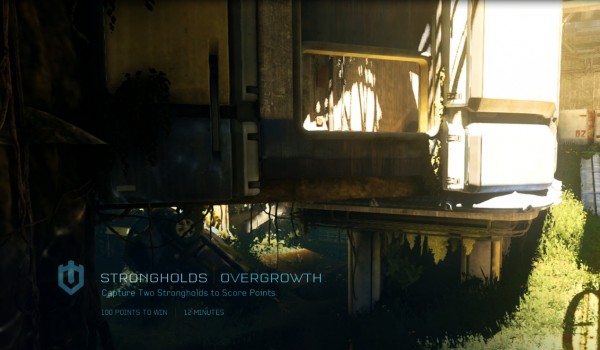
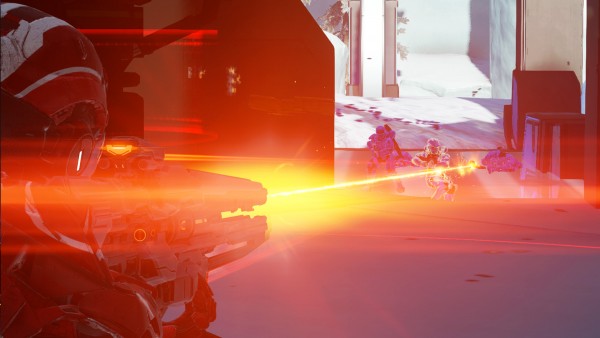
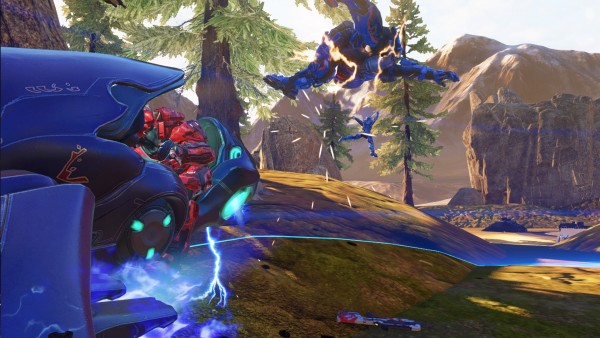
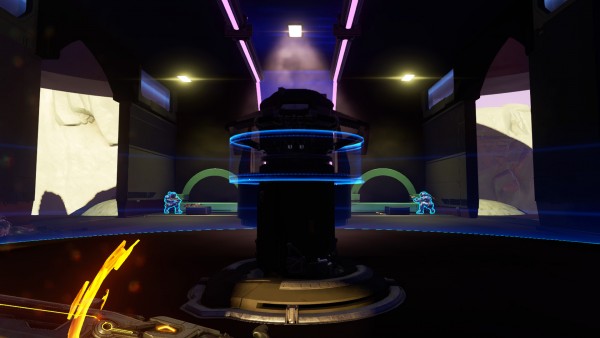
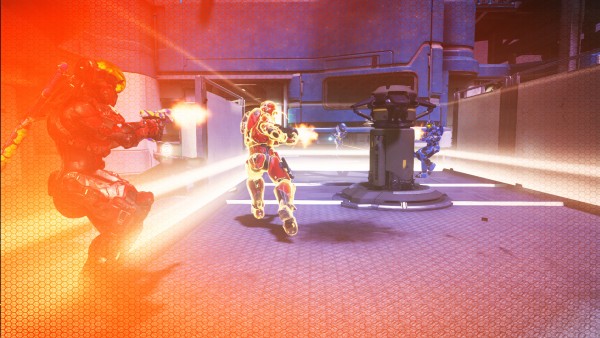
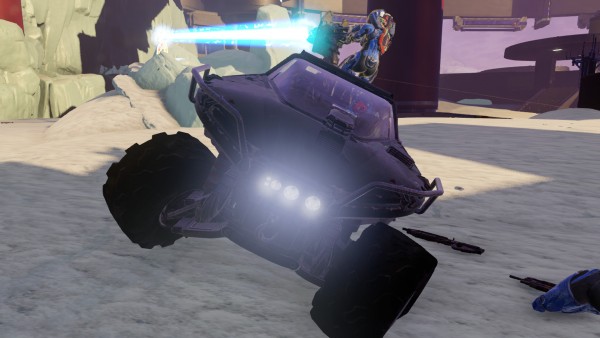
2 comments for “Developing Halo 5 Strongholds Team Strategies”